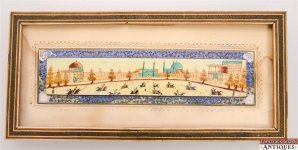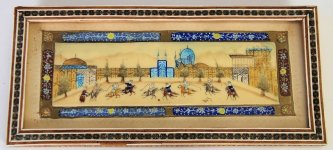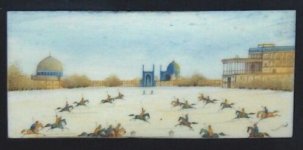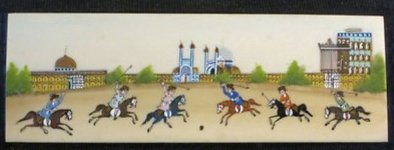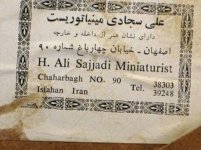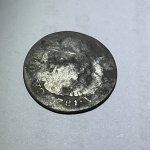Cariboo5
Hero Member
- Oct 27, 2011
- 719
- 1,143
- Primary Interest:
- All Treasure Hunting
The colours on this painting are stunningly brilliant and just as vibrant as the day
they were painted. It is miniature in size at just 3 1/8 inch long by 1 9/16 inch wide.
I cannot tell if it is painted on porcelain, bone or another type of material. Frame looks
hand made.
In my research I found on the history of Polo the following info taken from that site:
" The most spectacular tribute to polo, however, is an imperial city laid out around a royal polo ground . Esfahân was the constructed capital of Shah Abbâs the Great, the Safavid Emperor (1571-1629). Shah Abbâs planned his city to be the most beautiful in the world and centred it on his polo ground – the Maydân-e-Shah, also known as the Naqsh-e Jahân . This vast central square was the largest in the world until the construction of Tien An Meng. It is around 560 metres long and 160 metres wide. At each end are stone goal posts 7.3 metres apart, and this is today the regulation width of a polo goal.
At the south end of the field and just beyond the goal posts, Shah Abbâs constructed Masjed-e Shah, whose mosaic domes and minarets make it one of the most beautiful mosques in the world. Beyond the northern goal is the elaborately decorated Qaysariya Gateway leading to the Royal Bazaar. The polo ground was therefore very definitely at the centre of public life in the city. "
The back ground on this painting matches the Naqsh-e Jahan square where tribute to
the royal polo ground " the imperial city was constructed."
I have exhausted my research and if anyone can help with; when & where this painting may have been done, and the artist whom I believe signed this with his monogram (pic shown). All thoughts & opinions welcome....
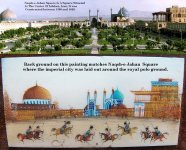 .....
.....
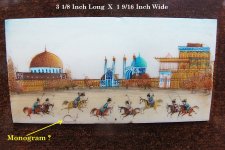
they were painted. It is miniature in size at just 3 1/8 inch long by 1 9/16 inch wide.
I cannot tell if it is painted on porcelain, bone or another type of material. Frame looks
hand made.
In my research I found on the history of Polo the following info taken from that site:
" The most spectacular tribute to polo, however, is an imperial city laid out around a royal polo ground . Esfahân was the constructed capital of Shah Abbâs the Great, the Safavid Emperor (1571-1629). Shah Abbâs planned his city to be the most beautiful in the world and centred it on his polo ground – the Maydân-e-Shah, also known as the Naqsh-e Jahân . This vast central square was the largest in the world until the construction of Tien An Meng. It is around 560 metres long and 160 metres wide. At each end are stone goal posts 7.3 metres apart, and this is today the regulation width of a polo goal.
At the south end of the field and just beyond the goal posts, Shah Abbâs constructed Masjed-e Shah, whose mosaic domes and minarets make it one of the most beautiful mosques in the world. Beyond the northern goal is the elaborately decorated Qaysariya Gateway leading to the Royal Bazaar. The polo ground was therefore very definitely at the centre of public life in the city. "
The back ground on this painting matches the Naqsh-e Jahan square where tribute to
the royal polo ground " the imperial city was constructed."
I have exhausted my research and if anyone can help with; when & where this painting may have been done, and the artist whom I believe signed this with his monogram (pic shown). All thoughts & opinions welcome....
 .....
.....



